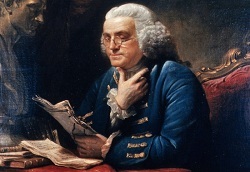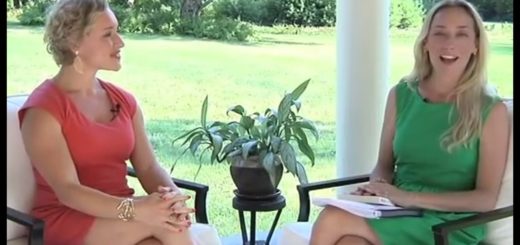Influence and the Power of Cognitive Dissonance
 There’s a story that Benjamin Franklin told in his autobiography that demonstrates the power of cognitive dissonance.
There’s a story that Benjamin Franklin told in his autobiography that demonstrates the power of cognitive dissonance.
Franklin was perplexed by how to interact with a man in his social/political circle who did not like him and would never agree with him. So, in order to smooth their relationship, he decided to try an experiment (Franklin was always experimenting).
He realized that he and the man had something in common – a love of books. So, he asked to borrow a particular book from the man, thinking that the man might have some some cognitive dissonance (though I’m not sure Franklin would have known of or used that term) about their relationship… and that maybe the man would lean toward liking him. It worked. The man began to warm up to Franklin.
The cognitive dissonance in the man’s mind was resolved in Franklin’s favor, but it’s entirely possible that the man could have chosen to keep on disliking Franklin. Apparently though, he couldn’t quite bring himself to totally dislike another book lover.
Here’s a reference to Franklin’s psychological experiment on Wikipedia: http://en.wikipedia.org/wiki/Ben_Franklin_effect
By the way, there’s another psychological influence factor at work in Franklin’s story. Once the cognitive dissonance was resolved in Franklin’s favor, the man continued to be influenced because of “reciprocity.”
The borrowing and lending of a book creates goodwill because as Robert Cialdini, author of the book Influence, says, it’s an inherent rule that is “deeply implanted in us by the process of socialization that we all undergo.” The origins of this impulse to be obligated to give something for getting something comes from human social evolution “because it meant that one person could give something (for example, food, energy, care) to another with confidence that the gift was not being lost… The result was the lowering of the natural inhibitions against transactions that must be begun by one person’s providing personal resources to another.”
What Franklin did was to find something he had in common with the man so they might get along better together. He used an age-old influence method. Now, thanks to the psychology experts, we know why it works so well.
__________________________________________________________
Angela Loëb helps people bring who they really are to what they do in life. More at http://about.me/angelarloeb
__________________________________________________________



